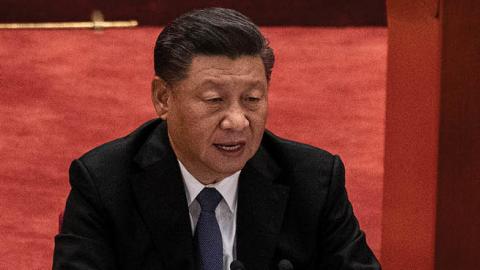Although China’s ties with South Asia are longstanding, Xi Jinping increasingly is looking westward to promote its economic and national security objectives. The Trump administration made Americans aware of the dangers inherent in China’s ambitions. The Biden administration will need to sharpen U.S. policy in light of how Beijing views the region.
First, China’s expansion in South Asia over the past two decades is a byproduct of regional trends and Beijing’s policy designs. The fact that South Asian trade with China grew by almost 550 percent between 2005 and 2018 is as much a testament to the region’s progress as it is to Beijing’s designs. But with the massive Belt and Road Initiative and a blue-water navy second in capability only to the U.S. Navy, China is pushing into South Asia and the Indian Ocean with unprecedented zeal.
Xi touts a “Chinese Dream” to put China back on top a century after repulsing imperial powers. For Xi, on the cusp of a third five-year term, China’s great rejuvenation requires internal security and unity at home, primacy over its periphery, and control over an integrated Eurasian continent and its adjacent maritime transit routes. All of these goals intersect the eight countries of South Asia.
Second, Beijing asserts that its expanding political, economic and military footprint in South Asia is inherently defensive. Sovereignty is at stake. The rugged frontier separating the two powers remains in dispute. But a more confident Beijing wants to solidify its claims — and certainly does not wish to cede any ground — as the recent deadly skirmish in Ladakh suggests.
Countering the “three evils” of separatism, terrorism and extremism requires more than a crackdown in Xinjiang and tighter control over Tibet. Western neighbors, including Afghanistan, must be stable to protect China’s investments and friends.
Managing a future India-Pakistan crisis from escalating into a nuclear exchange is as important to Beijing as preventing conflict on the Korean Peninsula.
Geopolitically, moving into South Asia is necessary to avoid encirclement. With America’s allies to the east, China’s aspirations may include thwarting reinforcements that might flow in from the west in, say, a Taiwan scenario.
Third, China’s expanding influence in South Asia helps build a more Sino-centric Eurasian order.
So, while relatively conflict-averse, China uses trade, investment, infrastructure, and other tools to establish thicker connectivity on the land, sea and digitally.
Beijing expects that, over time, South Asian countries will adopt China-friendly rules rather than jeopardize a critical relationship. Connectivity will put China in a position to influence the affairs of South Asian states better. And it will enable Beijing to use South Asia as both a bridge and a barrier to Africa and Europe.
Fourth, China wants to transform the Indian Ocean from a “far sea” to an intermediate one. Over the past 15 years, China’s navy has gone from conducting a single maneuver with Pakistan to pursuing an ascending progression of deployments and exercises with more partners and military capabilities. These activities culminated in a four-day China-Russia-Iran trilateral naval drill — Beijing’s answer to the U.S.-India-Japan Malabar exercise.
Consolidating China’s maritime control in the South China Sea is a springboard for projecting sea power westward.
Given the salience of China’s presence in South Asia for the United States, Washington should scrutinize the nuanced recommendations of an important bipartisan study published by the United States Institute of Peace. Three guidelines deserve emphasis:
* Tailor U.S. policies and investments in South Asia to better address China’s growing role there.
* Deepen the strategic partnership with India by enhancing bilateral technological and intelligence cooperation, conducting quadrilateral activities (with Japan and Australia), and advancing a Tech-10 forum of high-tech democracies to retain competitiveness and shape global standards.
* Prepare to manage regional crises in which the China-Pakistan bonds are strong. This means refocusing U.S.-Pakistan relations from security to economic cooperation, ensuring New Delhi is clear-eyed about the dangers of conflict escalation and crafting policies to offset any malign actions from Beijing.
While China’s primary region of concern remains East Asia, the United States cannot afford to ignore South Asia’s rising importance in Beijing’s calculations. Power may be more concentrated in Northeast Asia, and Southeast Asia may be the most pliable and accessible subregion. But China increasingly is looking westward to achieve the level of security and prosperity it desires.
Read in The Hill

















